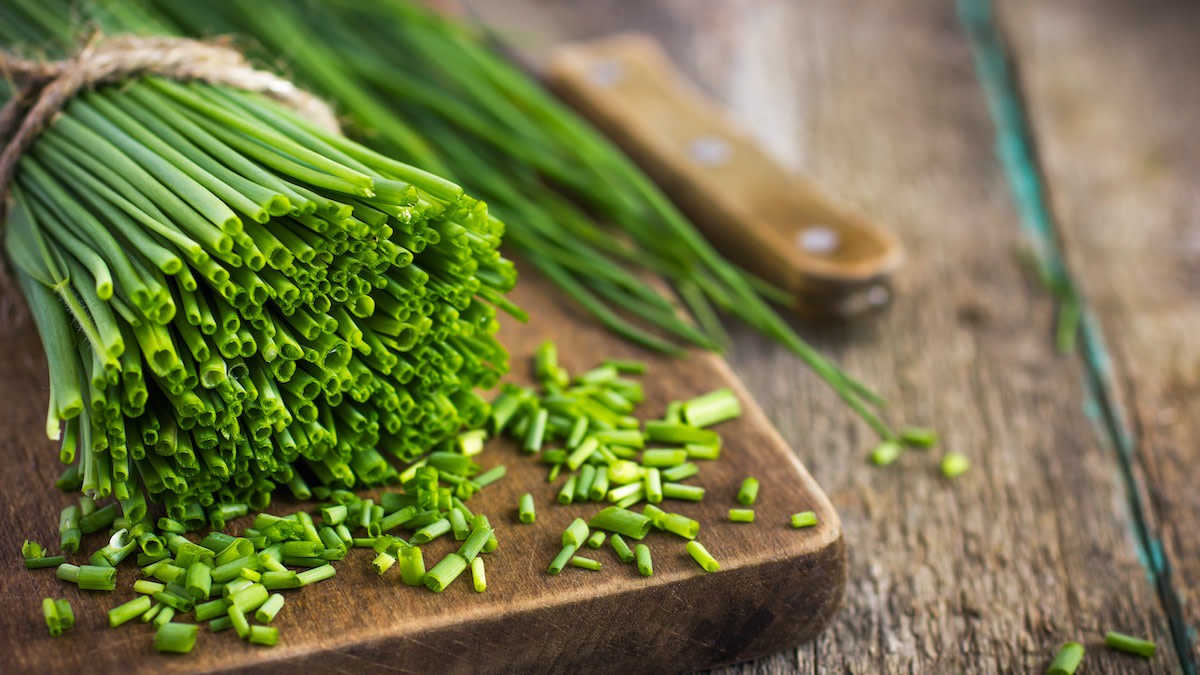Fresh chives add zest, texture, and bright color to food both as a seasoning and a garnish. Learn how to cut chives to make a quick, flavorful addition to an existing meal.
Learn From the Best
What Are Chives?
Chives are deep green culinary herbs that produce a tangy onion flavor. The chive plant (Allium schoenoprasum) is a perennial that grows readily in herb gardens throughout North America, Europe, and Asia. Hardy to many climates, they do well in full sun and benefit from regular precipitation.
Standard chives grow hollow green flower stalks called scapes. Their purple blossoms attract bees and other pollinating insects. When growing chives, look for chive leaves to emerge near the base of the plant in early spring, chive flower buds to emerge in late spring, and mature seeds in early summer. Allium schoenoprasum is not to be confused with a close relation, Allium tuberosum, which is commonly known as garlic chives. Those plants are more grass-like and bloom later in the year.
How to Cut Chives
Cutting chives is easy provided that you have a fresh plant to work with. You will need a cutting board and either a chef's knife or kitchen shears to snip the stalks to your preferred size.
- 1. Purchase or harvest chives. Choose the freshest chives at the grocery store or harvest chives from your own herb garden. Plan on harvesting chives roughly sixty days after planting them.
- 2. Remove any slimy sections of the chive. Slimy stalks likely died before the plant was picked. They have no texture and may be rotting, so it’s best to remove them.
- 3. Wash the chives. Rinse chives under cool water and gently rub them to remove any stubborn dirt. Gently dry the chives by blotting them with a paper towel.
- 4. Bundle the chives for easy cutting. You can try finely slicing them with a chef's knife against a cutting board, but the easiest method is to snip them to your preferred size with everyday kitchen scissors. Multi-blade herb scissors also work effectively.
4 Tips for Using and Storing Cut Chives
Keep these chive usage and storage tips in mind.
- 1. Fresh chives last about four days in the refrigerator. Store chives in an airtight container or a plastic bag in the refrigerator for short-term use.
- 2. For long-term storage, freeze chives. If you have more chives than you can use in four days, place them in a freezer bag, burp out the air, and stick them in the freezer. Chives can last a few months in the freezer, though the flavor will fade the longer they’re frozen.
- 3. Keep chives in the ground until you are ready to use them. If you grow your own chives in a DIY herb garden, wait to pick your chives until you are ready to cook with them. If you buy them from the grocery store, try to purchase them as close to cooking as possible for the freshest flavor.
- 4. Use chives to brighten up savory dishes. Compared to other members of the Allium genus, chives have a mild flavor that will not overpower other flavors. Sprinkle a few fresh chives on your omelet, mix them with oregano atop a pizza, mix chopped chives into soups and stews, or throw a handful into your salad.
Want to Learn More About Cooking?
Become a better chef with the MasterClass Annual Membership. Gain access to exclusive video lessons taught by the world’s best, including Gordon Ramsay, Gabriela Cámara, Chef Thomas Keller, Dominique Ansel, Yotam Ottolenghi, Alice Waters, and more.
